Rhythms of the Wildflower Meadow
- Jane Orton

- Aug 11
- 5 min read
Why do some wildflowers flourish some years but are hardly seen the next? Dr. Orton investigates the natural rhythm of the wildflower meadow and introduces three of this year’s most prolific species: greater willowherb, spear thistle and yarrow!
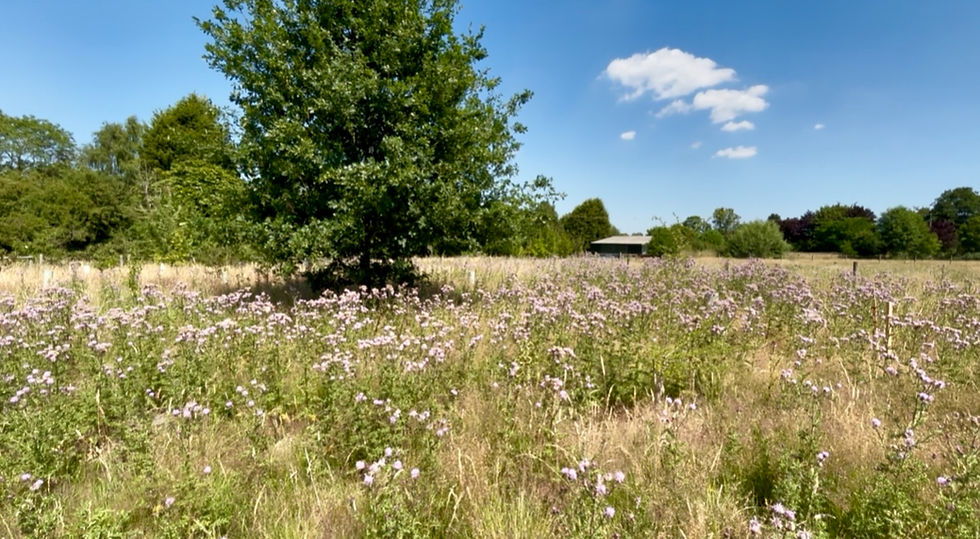
If you’ve been looking closely at Britain’s wildflower meadows – or even our roadside verges or water banks – you might have noticed that there are natural fluctuations in the kinds of plants that grow. Some wildflowers seem to boom one year, but are hardly seen the next; sometimes you will see whole patches of the same kind of plant; sometimes you’ll only see one or two of that species.
This might be due to variations in temperature, rainfall, light and frost, competition with other plants lifecycles (if the plant is perennial, biennial or has irregular flowering cycles), pollinator availability and browsing by herbivores. Last year, we had an unexpected ragwort boom and earlier this summer, we had an abundance of bird’s-foot-trefoil, buttercups and self-heal.
These rhythms will change throughout the season: now the plants that were in full bloom in June and July give way to others in August. We’ve also noticed that three of our most prolific plants have been growing in clumps and this has created quite magical habitats for wildlife!
Yarrow
Yarrow (Achillea millefolium) is already inclined to grow in clumps because it spreads through rhizomes (horizontal stems) that grow underground and send up new shoots nearby. It’s also perennial, meaning that it regrows evert year from the same root system. Forming clumps also helps yarrow to compete with other plants for light, space and nutrients.
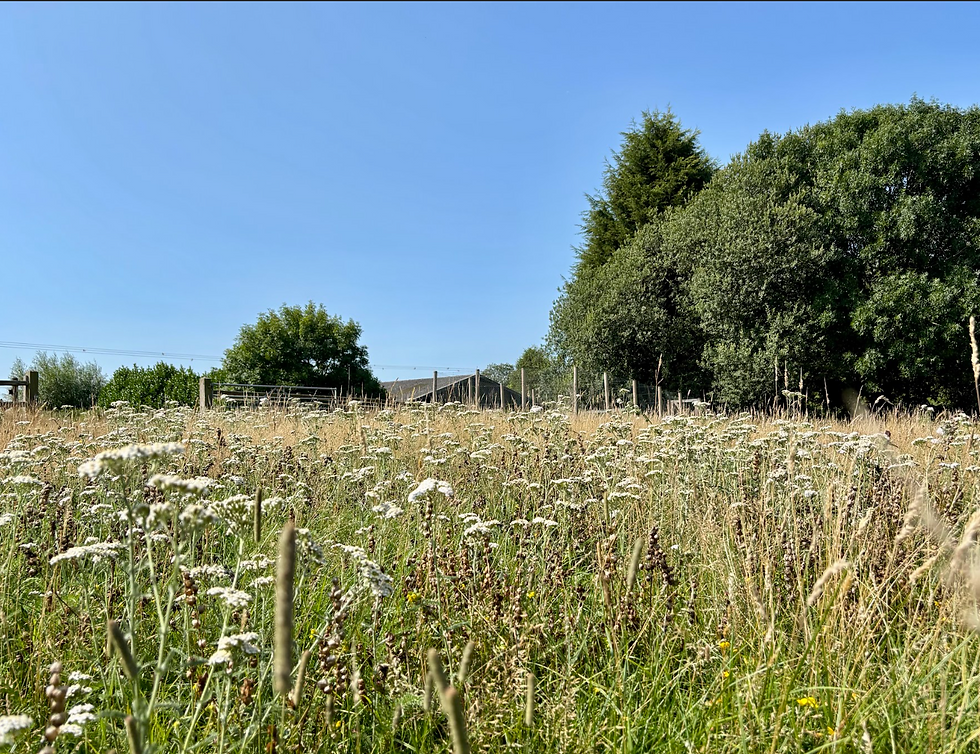
We’ve had some big clusters of yarrow growing in our paddock – the same place we had our ragwort jungle last year! Yarrow is good for lots of different pollinators and we’ve seen lots of common blue butterflies especially in our yarrow patches, as well as lots of ladybirds. Click the link to read about our most common butterflies this summer!
People also use yarrow for food and medicine and it’s a great favourite with foragers! Bushcraft and foraging expert Andy Hall of Andysoutings says that yarrow is one of the best diaphoretic herbs (good for fevers) and one of the “carpenters’ herbs” (used as a poultice to aid the healing of wounds). If you’re interested in this aspect of our wildflowers, remember never to eat any wild plant unless you are sure that you have identified it correctly as an edible species. It’s a good idea to take a foraging course with someone like Andy before you dive in!
In Homer’s Iliad, Patroclus treats the wounded Eurypylus with a herb that Achilles had taught him to use. This herb stops the bleeding and kills Eurypylus’ pain. Homer is not specific here, but later tradition and writers like says that the herb is yarrow. Pliny the Elder attributes yarrow’s healing abilities to Achilles. Click the link to read more about Achilles and other heroes in Homer’s Iliad!
Greater Willowherb
Greater willowherb (Epilobium hirsutum; also known as hairy willowherb due to the fine hairs that cover its stems and leaves) is also perennial and spreads through seeds, underground rhizomes and sometimes stolons (above-ground runners).
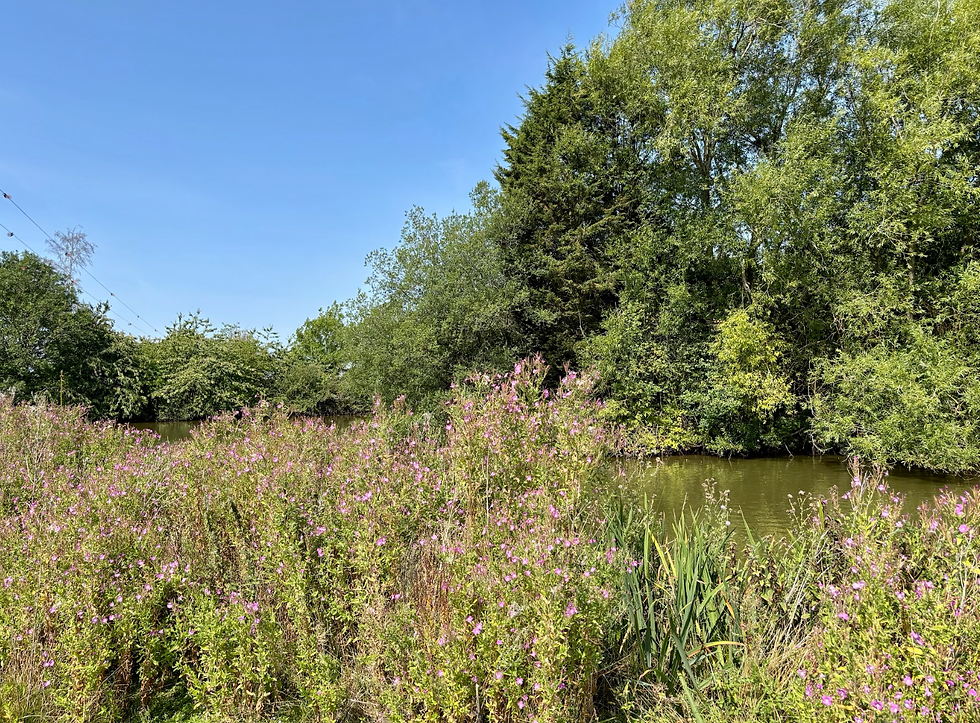
Greater willowherb likes damp soils near bodies of water and wet meadows. We have big clusters of it in our hedgerows and by the wildlife pond we created.
Growing in clusters actually helps greater willowherb to stabilise the soil in these areas due to the thick root networks. This can be important for sloped areas or areas that might be prone to erosion and it can help other species to establish.
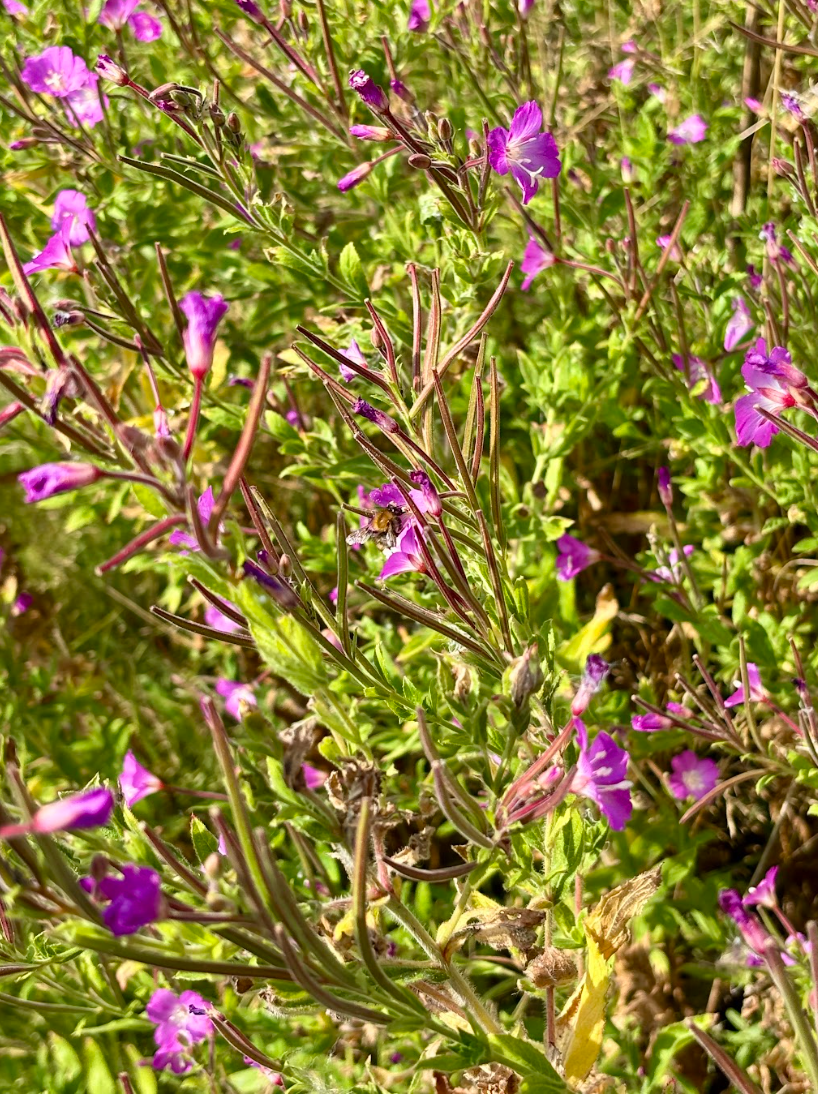
Greater willowherb is also important for bees, butterflies and other pollinators. We’ve especially noticed a lot of common carder bees (Bombus pascuorum) in our patches. These have medium-length tongues, so they like the greater willowherb’s tubular flowers.
Spear Thistle
Spear thistle (Cirsium vulgare) doesn’t spread by rhizomes, but it produces a lot of wind-dispersed seeds, which often land near the parent plant and encourage large clusters. It also has deep taproots, meaning that it can cope with harsh conditions and it’s biennial, meaning that it spends the first year as a rosette and flowers in the second year.
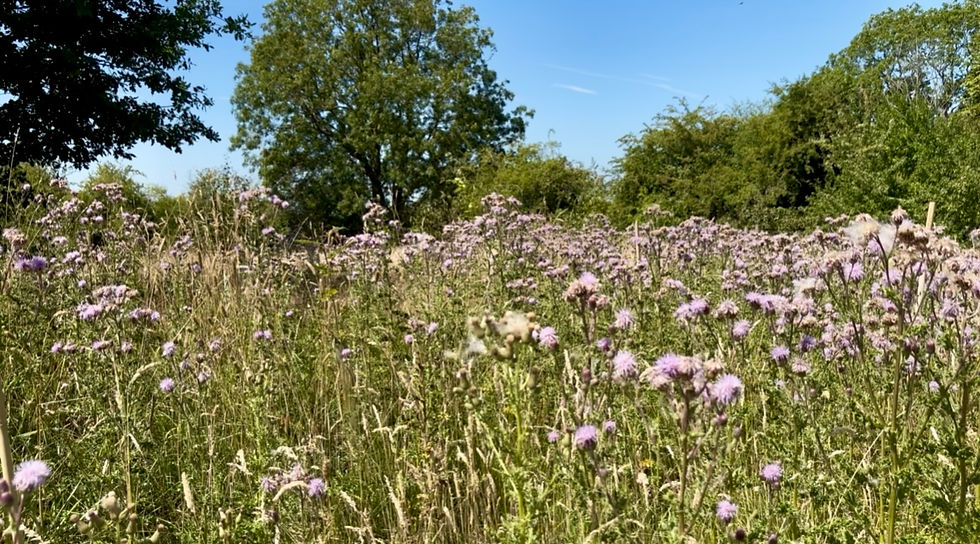
We have a lot of spear thistle patches this year, including a huge patch on the edge of our Big Field meadow surrounding a young oak tree. We’ve noticed a lot of peacocks butterflies on our spear thistle especially. They like it because the length of their proboscis (elongated mouthpart) helps them reach the nectar in the thistle flowers easily. Large and small white butterflies also love it!
Also look out for goldfinches in spear thistle patches, as their slim beaks are perfectly adapted for removing seeds from the spiky flower heads!
Find Out More
If you’re interested in conservation and wildlife, we have a blog series on British wildlife and a series on the people and wildlife of South Asia, from the altitudes of the Himalayas to the dense mangrove forests of Bangladesh!
We also offer online private tuition in our interdisciplinary course, Culture and Conservation, in which you can explore the links between our natural and cultural heritage and study wildlife and cultures from across the world! This is a template of a possible study route and can be combined, adapted, or designed from scratch to suit your interests and goals.
Dr. Orton will work with you to design a course of private tutorials tailored to your needs, ability and schedule. Click the link to find out what it’s like to work with her and contact us to find out more!
Do More
For those who would like to take action to preserve our wild spaces, there’s plenty you can do. Find out how we started our wildflower meadow, how we created a wildlife pond and how we are planting a native woodland from scratch! Even if you don’t have a big garden, there are plenty of things you can do to help biodiversity in your area. Why not put up a solitary bee nesting box or insect home, create a woodpile as a habitat for small creatures or leave small areas of your garden to go wild?
Think about your own area and how you can protect vulnerable but important parts of your own environment. You might even want to start your own project investigating the cultural importance of wildlife in your area. Dr. Orton works with independent scholars undertaking their own research for an independent project, people writing a book or simply those who have a personal interest. Click the link to find out what it’s like to work with her and contact us to get started!
Reach Out
We’d love to see what you’re doing to help wildlife in your area. Follow the Conservation highlight reel on the Orton Academy Instagram to see what we’re getting up to and tag us in to any snaps you put up!




Comments